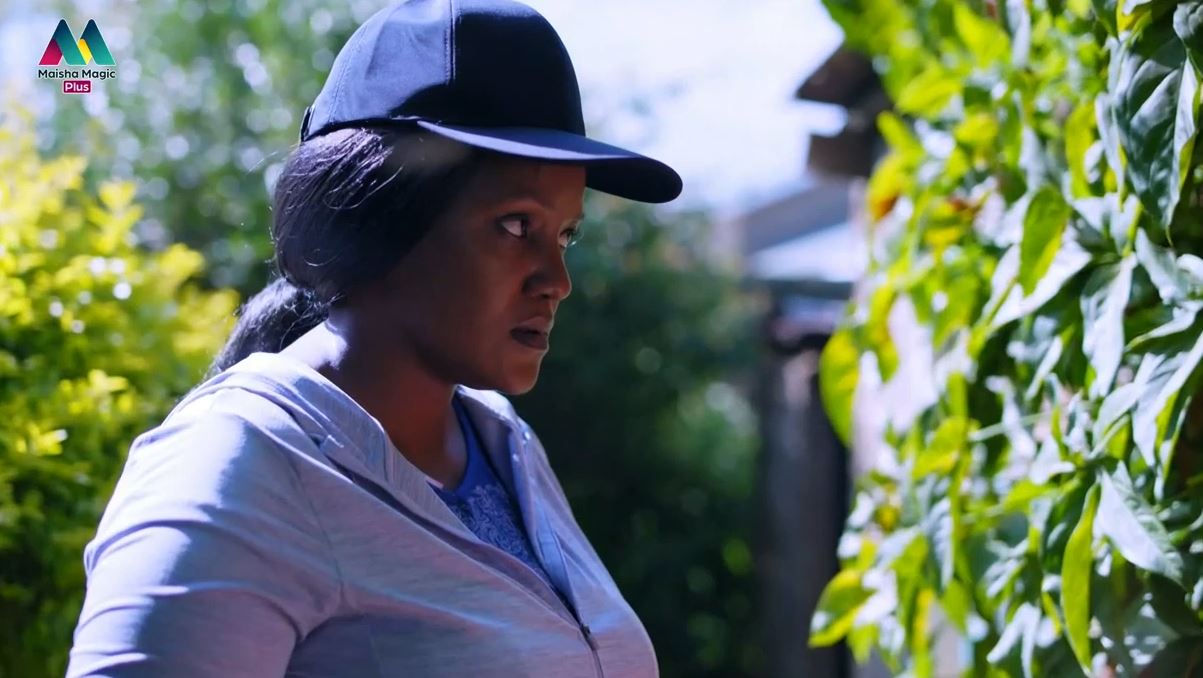Exploring the ZTE Nubia Neo 3 5G: Specs, Expected Price in Kenyan Shillings, and More
The ZTE Nubia Neo 3 5G, announced on March 3, 2025, at MWC 2025 and launched globally by the end of March 2025, is an affordable gaming smartphone from ZTE’s Nubia brand, designed to deliver solid performance, a vibrant display, and gaming-focused features at a budget-friendly price. As a successor to the Nubia Neo 2, it offers a more accessible entry point compared to the higher-end Nubia Neo 3 GT 5G, with a focus on value-driven 5G connectivity and gaming capabilities. With its Kenyan rollout expected in Q3 2025 (July–September), the Nubia Neo 3 5G competes with devices like the Infinix Hot 50 Pro and Realme 14 5G in Kenya’s budget to mid-range market. Here’s a detailed look at its specifications, expected price in Kenyan Shillings, target audience, and its strongest and weakest features, based on verified sources.
Specifications of the ZTE Nubia Neo 3 5G
The ZTE Nubia Neo 3 5G is tailored for budget gamers and casual users, offering a balance of performance, display quality, and battery life. Below are its confirmed specifications, compiled from GSMArena, FoneArena, and other reliable sources:
- Display: 6.8-inch FHD+ AMOLED (1080x2392px, ~386ppi), 120Hz refresh rate, 1300 nits peak brightness, 100% DCI-P3 color gamut, 1200Hz instant touch sampling rate, 10-bit color.
- Processor: Unisoc T8300 (6nm), Octa-core (1×2.2 GHz Cortex-A76, 3×2.0 GHz Cortex-A76, 4×1.8 GHz Cortex-A55), Mali-G57 MC2 GPU.
- RAM and Storage: 8GB/128GB or 8GB/256GB (LPDDR4X RAM, UFS storage), expandable via microSDXC (dedicated slot, up to 1TB).
- Camera System:
- Rear: Dual setup with 50MP main (f/1.8, wide, PDAF) and 2MP depth (f/2.4).
- Front: 16MP selfie camera (wide).
- Features AI enhancements (AI Eraser, Night Mode, HDR, Panorama), 1080p@30fps video recording.
- Battery: 6000mAh (non-removable Li-Po), 33W wired fast charging (70% in ~1 hour), no bypass charging.
- Operating System: Android 15 with Nubia’s Game Space UI, no confirmed OS update duration, minimal bloatware.
- Durability: No official IP rating, glass front and back, plastic frame, drop-resistant design.
- Connectivity: 5G (multiple bands), Wi-Fi 5, Bluetooth 5.2, NFC, USB-C 2.0, dual SIM (Nano+Nano), wireless FM radio, no 3.5mm headphone jack.
- Design: “Mecha Design” with futuristic aesthetics, available in Black and Silver, dimensions 166.0×76.1×8.5mm, weight 192g.
- Additional Features: Stereo speakers with DTS:X Ultra, side-mounted fingerprint sensor, sensors (accelerometer, proximity, compass), Game Space UI with Eco, Balanced, and Rise modes for gaming optimization.
Expected Price in Kenyan Shillings
In global markets, the ZTE Nubia Neo 3 5G is priced at ~$150 USD (PHP 7,999 in the Philippines, ~$139 USD during early bird promotions from March 15–21, 2025), significantly lower than the Nubia Neo 3 GT 5G (~$227 USD). In India, it’s listed at ₹23,990 (~$285 USD), though this seems high given its specs compared to the GT variant. In Kenya, smartphone prices include import duties, taxes, and retailer margins, inflating costs. Based on the current exchange rate (1 USD ≈ 130 KES as of June 2025) and local market trends, the ZTE Nubia Neo 3 5G is expected to retail in Kenya for KES 18,000–25,000 for the 8GB/128GB variant and KES 22,000–28,000 for the 8GB/256GB variant. Promotional offers on platforms like Jumia Kenya may lower this to KES 16,000–20,000 during launch events.
Availability in Kenya is expected in Q3 2025 (July–September) via retailers like Jumia, Safaricom shops, or ZTE’s partners, with potential offers like free accessories (e.g., phone stand) or EMI options through partners like Bajaj Finserv.
Who Is the ZTE Nubia Neo 3 5G Best For?
The ZTE Nubia Neo 3 5G is designed for budget-conscious users seeking an affordable 5G smartphone with gaming capabilities and a vibrant display. Its target audience includes:
- Casual Gamers: The 120Hz AMOLED display, Unisoc T8300 chipset (AnTuTu ~450,000), and Game Space UI make it suitable for casual gaming titles like Free Fire, Mobile Legends: Bang Bang, and Call of Duty: Mobile at medium settings.
- Students and Young Users: The 6.8-inch AMOLED display and 5G connectivity appeal to Gen Z for streaming, social media, and casual gaming on platforms like YouTube and TikTok.
- Social Media Enthusiasts: The 50MP main camera with AI enhancements delivers decent daylight photos for Instagram or WhatsApp, ideal for casual content creators.
- Multimedia Consumers: The AMOLED display with 1300 nits brightness and stereo speakers with DTS:X Ultra ensures an immersive experience for Netflix or music streaming.
- Budget Buyers: Kenyan consumers in the KES 18,000–28,000 range seeking 5G, expandable storage, and a large battery will find it a compelling alternative to the Infinix Hot 50 Pro or Realme 14 5G.
The Neo 3 5G is particularly appealing to Kenyan youth and first-time smartphone buyers prioritizing affordability, battery life, and gaming performance.
Strongest Features
- Large Battery and Fast Charging: The 6000mAh battery, one of the largest in its class, lasts up to 2 days for casual use or 14 hours of gaming, with 33W fast charging (70% in ~1 hour), outpacing rivals like the Realme 14 5G (6000mAh, 18W).
- Vibrant AMOLED Display: The 6.8-inch FHD+ AMOLED with 120Hz refresh rate, 1300 nits brightness, and 100% DCI-P3 color gamut offers vivid visuals and smooth scrolling, ideal for gaming and multimedia, surpassing IPS LCDs on competitors like the Infinix Hot 50 Pro.
- Expandable Storage: A dedicated microSDXC slot (up to 1TB) provides flexibility for media-heavy users, a rare feature in budget phones compared to the Infinix Zero 50 5G without expandable storage.
- Affordable 5G Connectivity: The Unisoc T8300 chipset supports 5G, ensuring future-proof connectivity in Kenya’s growing 5G network, a standout feature at this price point.
- Gaming-Focused UI: The Game Space UI with Eco, Balanced, and Rise modes optimizes performance for gaming, enhancing the experience for budget gamers, as noted by GadgetMatch.
Weakest Features
- Average Camera Performance: The 50MP main camera performs well in daylight but struggles in low light, and the 2MP depth sensor adds minimal value, trailing rivals like the Tecno Pova 6 Pro with better secondary cameras.
- Underpowered Processor: The Unisoc T8300 (AnTuTu ~450,000) is less powerful than the Unisoc T9100 in the Neo 3 GT or the Dimensity 7300 in the Infinix Note 50x 5G, limiting performance in demanding games like Wuthering Waves.
- No IP Rating: Unlike the IP65-rated Honor X9c or IP64-rated Lava Agni 3, the Neo 3 5G lacks an official IP rating, reducing durability against dust and water.
- Unclear Software Support: ZTE has not specified the duration of OS updates or security patches for Android 15, potentially limiting longevity compared to Samsung’s 7 years or Honor’s 5 years.
- No 3.5mm Headphone Jack: The absence of a 3.5mm jack may inconvenience users who prefer wired audio, unlike competitors like the Infinix Hot 50 5G.
Addressing the “Upcoming ZTE Nubia Neo 3 5G” Query
The ZTE Nubia Neo 3 5G, launched in March 2025, is available globally, with Kenya’s rollout expected in Q3 2025. Some sources, like Bajaj Finserv, inaccurately list a Unisoc T820, 6.72-inch IPS LCD, or 33W charging for the Neo 3 GT, but official details confirm the Unisoc T8300, 6.8-inch AMOLED, and 33W charging for the Neo 3 5G. Other sources, like MobileDokan, mention a 16MP selfie camera and varying launch dates (e.g., June 2025), but GSMArena and FoneArena confirm the specs above. A post on X praises its gaming performance for Call of Duty: Mobile but notes the processor’s limitations for high-end titles. The Neo 3 5G builds on the Nubia Neo 2 (6.72-inch IPS LCD, Unisoc T820, 6000mAh battery) with an AMOLED display and 5G support.
Conclusion
The ZTE Nubia Neo 3 5G, launched in March 2025 with a Kenyan rollout expected in Q3 2025, is a budget gaming smartphone priced at KES 18,000–28,000. Its 6.8-inch 120Hz AMOLED display, 6000mAh battery with 33W charging, Unisoc T8300 chipset, and expandable storage make it ideal for casual gamers, young users, and social media enthusiasts. The Game Space UI and 5G connectivity enhance its appeal for Kenyan youth seeking value-driven devices.
However, its average camera performance, underpowered processor, lack of an IP rating, unclear software support, and missing 3.5mm headphone jack may deter users prioritizing photography, high-end gaming, or durability. Compared to rivals like the Infinix Hot 50 Pro or Realme 14 5G, it excels in battery life and display quality but lags in processing power and camera versatility. Kenyan consumers can expect it at retailers like Jumia, Safaricom, or ZTE’s partners in mid-2025, with potential offers like free accessories or EMI options boosting its value in the KES 18,000–28,000 segment.
Sources: Information compiled from GSMArena, FoneArena, NotebookCheck, Smartprix, GadgetMatch, PhilNews, MobileDokan, and posts on X, with Kenyan pricing estimated based on global pricing and local market trends.
SHANGA MAISHA MAGIC PLUS SEASON 2 EPISODE 48 MONDAY JUNE 30TH 2025 FULL EPISODE










You must be logged in to post a comment.